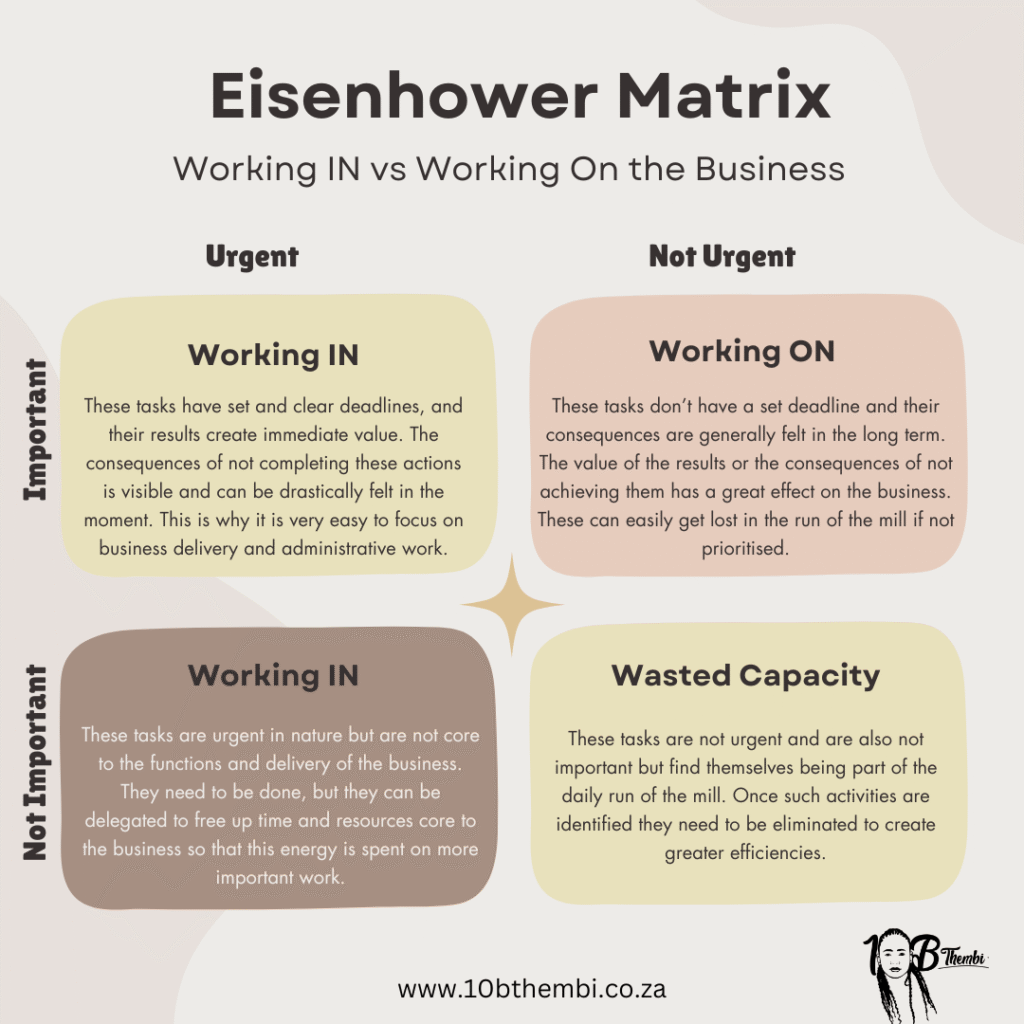Leadership isn’t just about power—it’s about responsibility.
As leaders and business owners, we often find ourselves in situations where we must make tough decisions with limited information. From the outside, leadership can look like authority and influence, but on the inside, every choice carries weight. The higher you go, the more complex the decisions become.
If you aspire to grow as a leader, you must get comfortable making decisions despite uncertainty. Yes, it’s daunting. Yes, you might get it wrong. But making mistakes is part of the process. What separates great leaders from the rest is their ability to refine their decision-making process and adapt when things don’t go as planned.
My team often comments on my ability to make decisions and chart a way forward with limited information. Over time, working with limited information has become normal to me—but it wasn’t always that way. It’s a muscle that needs to be exercised to grow.

What holds us back is the fear of making mistakes.
So why are we scared of mistakes? Let’s start with what fear is. Fear is an innate protection mechanism designed to keep us safe from danger and ultimately alive for longer. When there is the unknown, there is the possibility of danger—where we can get hurt, whether physically, emotionally, or financially. Fear is a caution to what may happen, and rather than fighting against it, it is best to work with it and build mitigating measures that help minimise risk. Minimising risk is not the same as eliminating it, but it is a far better way to manage uncertainty.
We’ve all heard the saying, “Do it scared.” And although it’s true, we must also use fear as a tool—to help mitigate risk.
So, how do you build your decision-making muscle?
To help navigate fear and uncertainty, structured decision-making models can serve as helpful guides. Let’s explore three that have made a tangible impact on how I lead:
1. Adopt a Decision-Making Framework
Relying purely on intuition can be risky. A structured framework ensures your decisions are well thought out. If you’re more of an unstructured person like me, the idea of a framework may put you off—but hear me out. For me, structure is less about rigid theory and more about having mental checkboxes that guide my thinking.
Here are three practical models:
The OODA Loop (Observe, Orient, Decide, Act)
Originally developed by military strategist John Boyd, this model helps leaders make fast, effective decisions in dynamic and fast-paced environments.
• Observe – Gather as much relevant information as possible. Get comfortable with the idea that you may not have all the data you need—but you must be willing to work with just enough.
• Orient – Analyse the data, considering internal and external factors. It’s important to think through the information in concert with all the other available elements. One common mistake I’ve seen leaders make is viewing data only from their own lens. Even if you’re confident in your view, analysing different perspectives will enrich your final decision.
• Decide – Make a choice based on the best available insights. Remember in math class when teachers asked you to show your steps, not just your answer? That applies to leadership too—the reasoning behind your decision often carries more weight than the decision itself. Be clear about your intent and thought process.
• Act – Implement the decision while staying agile enough to adjust if needed. Avoid analysis paralysis. In some cases, precision is crucial (like in engineering); in others, you can iterate and refine. If you realise you got it wrong, reflect, identify the improvement points, and make the necessary adjustments. Action is what gets things done.
This framework is especially useful when time is tight and the pressure is high.
The Eisenhower Matrix (Urgent vs. Important)
Not all decisions require immediate action. This is one of my favourite—and most sobering—tools. The Eisenhower Matrix helps leaders prioritise effectively:
• Urgent & Important – Do it now.
• Important but Not Urgent – Schedule it.
• Urgent but Not Important – Delegate it.
• Neither Urgent nor Important – Eliminate it.
I’ve learned that urgent tasks are not always important—and important tasks are not always urgent. In business, I’ve seen crucial areas like marketing, tracking metrics, and team development get sacrificed for the day-to-day demands of client service. The sad reality is that if you don’t make time for the important, the urgent—and sometimes not important—will fill the vacuum. Use this matrix to reflect and adjust your strategy.

The 10/10/10 Rule
Pioneered by Suzy Welch, this rule helps you evaluate decisions with a long-term view:
• How will I feel about this in 10 minutes?
• How will I feel about this in 10 months?
• How will I feel about this in 10 years?
This method is powerful because it encourages long-term thinking rather than short-term emotional reactions. My personal rule: don’t sacrifice long-term goals for momentary fulfilment. This tool is particularly useful for personal and ethical decisions that can carry emotional weight.
2. Think Through Multiple Scenarios
When making decisions, don’t just focus on what could go right—also consider what could go wrong. I often joke in meetings, “What’s the worst that could happen?” But it’s actually a useful mindset.
Use scenario planning to prepare for different outcomes:
Best-case scenario – What if everything goes perfectly?
Worst-case scenario – What’s the worst that could happen?
Most probable scenario – What’s the likely outcome based on facts?
Thinking through these scenarios enables you to prepare and create backup plans for most eventualities. The planning stage shouldn’t be overlooked—it helps mitigate real risks.
Leaders who consistently consider multiple possibilities are far better equipped to deal with challenges and surprises.
3. Always Have a Mitigation Strategy
Even with the best planning, things don’t always go as expected. That’s why risk mitigation is essential. Ask yourself:
- If this decision turns out to be wrong, how can I pivot?
- Who do I need to communicate with if things go off track?
- What safety nets can I put in place to minimise damage?
Great leaders don’t just make decisions—they build resilience into their decision-making process. As a leader, you won’t always get it right—so always have a backup… of a backup… of a backup.
Final Thoughts: Decide. Lead. Grow.
At its core, leadership is about taking responsibility for choices, adapting to outcomes, and learning along the way. The best leaders aren’t the ones who never make mistakes—they’re the ones who make thoughtful, informed decisions, adjust when needed, and keep leading.
So next time you face a tough call, remember: it’s not just about the power and authority of leadership—it’s about embracing the responsibility that comes with it.
Lean in. Decide. Grow.
#Leadership #DecisionMaking #Growth #RiskManagement #BusinessLeadership



